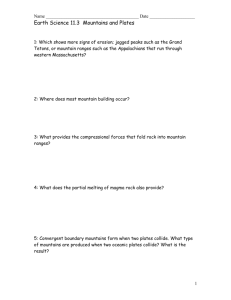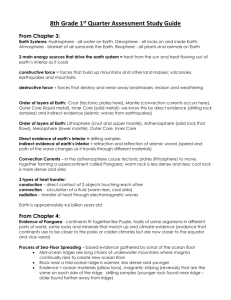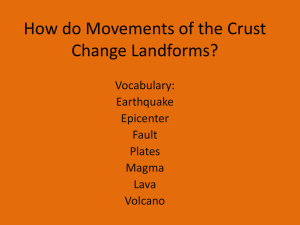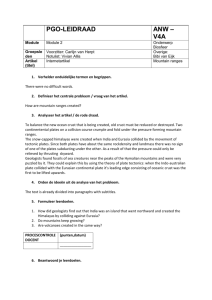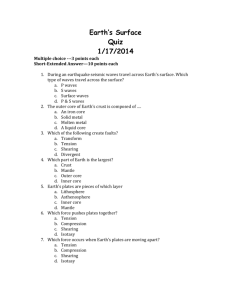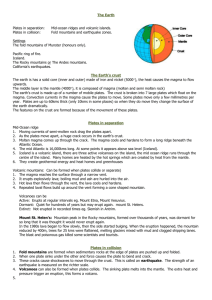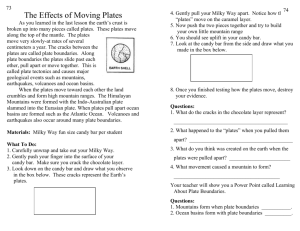7. Mountain Formation
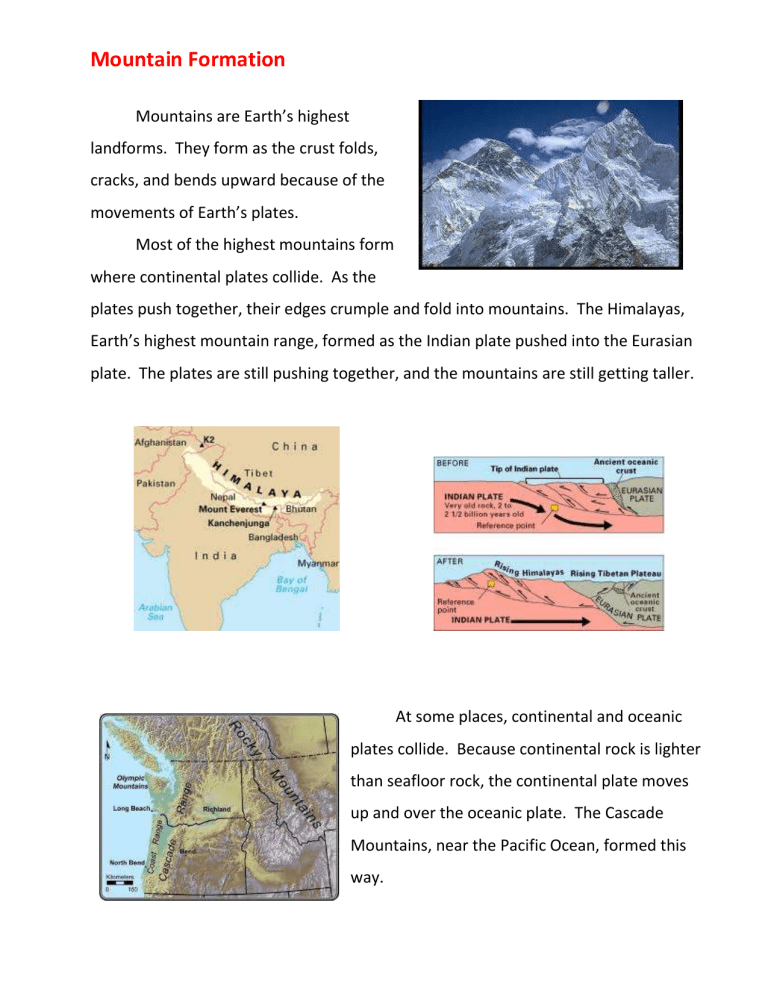
Mountain Formation
Mountains are Earth’s highest landforms. They form as the crust folds, cracks, and bends upward because of the movements of Earth’s plates.
Most of the highest mountains form where continental plates collide. As the plates push together, their edges crumple and fold into mountains. The Himalayas,
Earth’s highest mountain range, formed as the Indian plate pushed into the Eurasian plate. The plates are still pushing together, and the mountains are still getting taller.
At some places, continental and oceanic plates collide. Because continental rock is lighter than seafloor rock, the continental plate moves up and over the oceanic plate. The Cascade
Mountains, near the Pacific Ocean, formed this way.
Mountains do not form only at the edges, or boundaries, of plates. Some mountains form where pressure from movement at the boundaries pushes a block of rock upward. The
Grand Tetons of Wyoming rise straight up from the flat land around them.
Plates that pull apart leave gaps between them. Magma bubbles up between the plates. Magma is hot, soft rock from Earth’s mantle. Magma builds up along the cracks, forming long chains of mountains under the ocean. The mountains are called mid-ocean ridges. The Mid-Atlantic Ridge is Earth’s longest mountain range. It separates the North American and Eurasian plates in the North Atlantic and the
South American and African plates in the South
Atlantic.
√
How do most of the highest mountains form?



